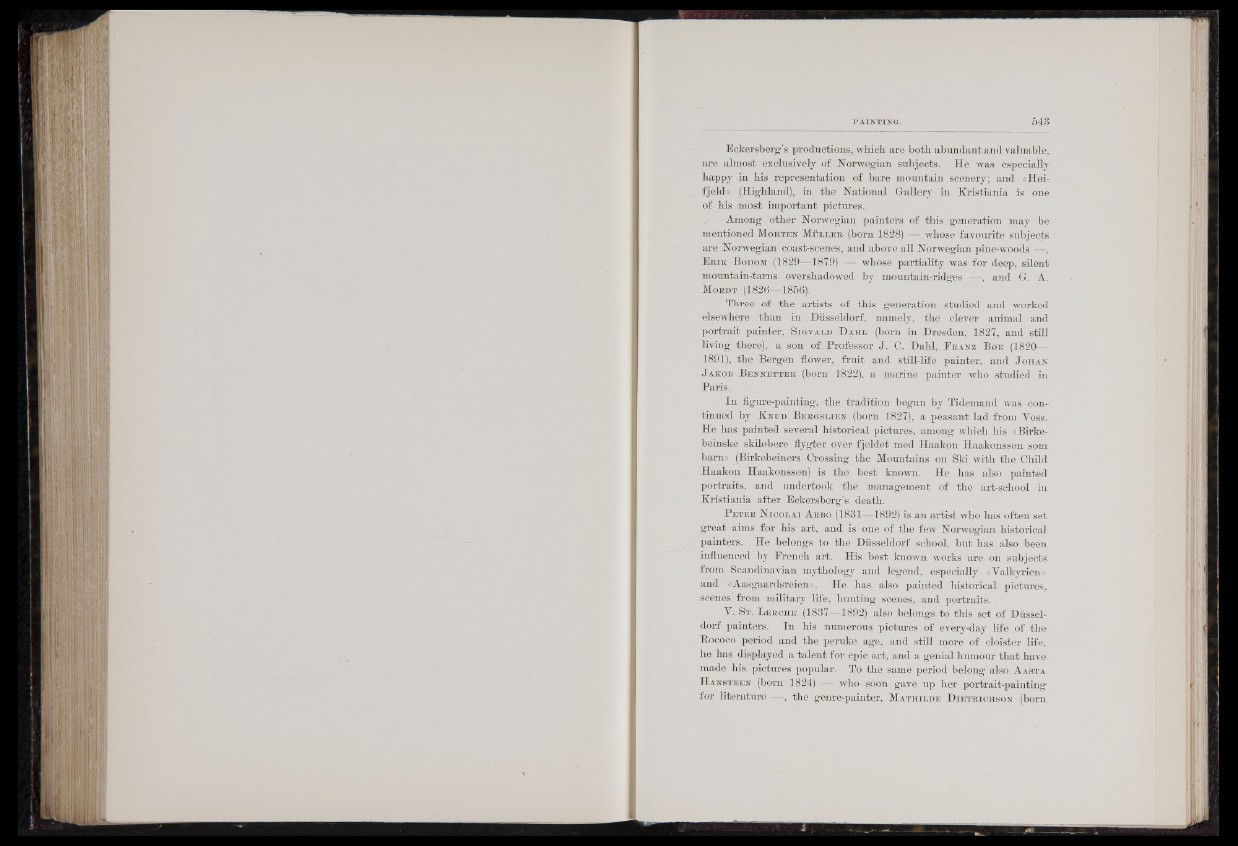
■ a !
Ill
igti jm
I
I 11
I I .
m
B
Eckersberg’s productions, which, are both abundant and valuable,
are almost exclusively of Norwegian subjects. He was especially
happy in bis representation of bare mountain scenery; and «Hai-
fjeld» (Highland), in the National Gallery in Kristiania is one
of bis most important pictures.
Among other Norwegian painters of this generation may be
mentioned M o r t e n M ü l l e r (born 1828) — whose favourite subjects
are Norwegian coast-scenes, and above all Norwegian pine-woods pH
E r i k B o d o m (1829—1879) S whose partiality was for deep, silent
mountain-tams overshadowed by mountain-ridges ^ 9 and G . A.
M o h d t (1826'—1856).
Three of the artists of this generation studied and worked,
elsewhere than in Düsseldorf, namely, the clever animal and
portrait painter, S ig v a l d D a h l (bom in Dresden, 1827, and still,
living there), a son of_Professor J . C . Dahl, F r a n z B o e (1820—
1891), the Bergen flower, fruit and still-life painter, and J o h a n
J a k o b B e n n e t t e r (born 1822), a marine painter who studied in
Paris.
In figure-painting, the tradition begun by Tidemand was continued
by K n u d B e i s g s l i e n (bom 1827), a peasant lad from Voss.
He has painted several historical pictures, among which his «Birke-
beinske skilobere flygter over fjeldet med Haakon Haakonsson som
bam» (Birkebeiners Crossing the Mountains on Ski with the Child
Haakon Haakonssan) is the best known. He has also painted
portraits, and undertook the management of the art-school in
Kristiania after Eckersberg’s death.
P e t e r N i c o l a i A r b o (1831— 1892) is an artist who has often set
great aims for his art, and is one of the few Norwegian historical
painters. He belongs to the Düsseldorf school, but has also been
influenced by French art. His best known works are on subjects
from Scandinavian mythology and legend, especially «Valkyrien»
and «Aasgaardsreien». He has also painted historical pictures,
scenes from military life, hunting scenes, and portraits.
V. St. L e r c h e (1837—1892) also belongs to this set of Düsseldorf
painters. In his numerous pictures of every-day life of the
Rococo period and the peruke age, and still more of cloister life,
he has displayed a talent for epic art, and a genial humour that have
made his pictures popular. To the same period belong also A a s t a
H a n s t e e n (born 1824)||||| who soon gave up her portrait-painting
for literature —, the genre-painter, M a t h i l d e D i e t r i c h s o n (bom